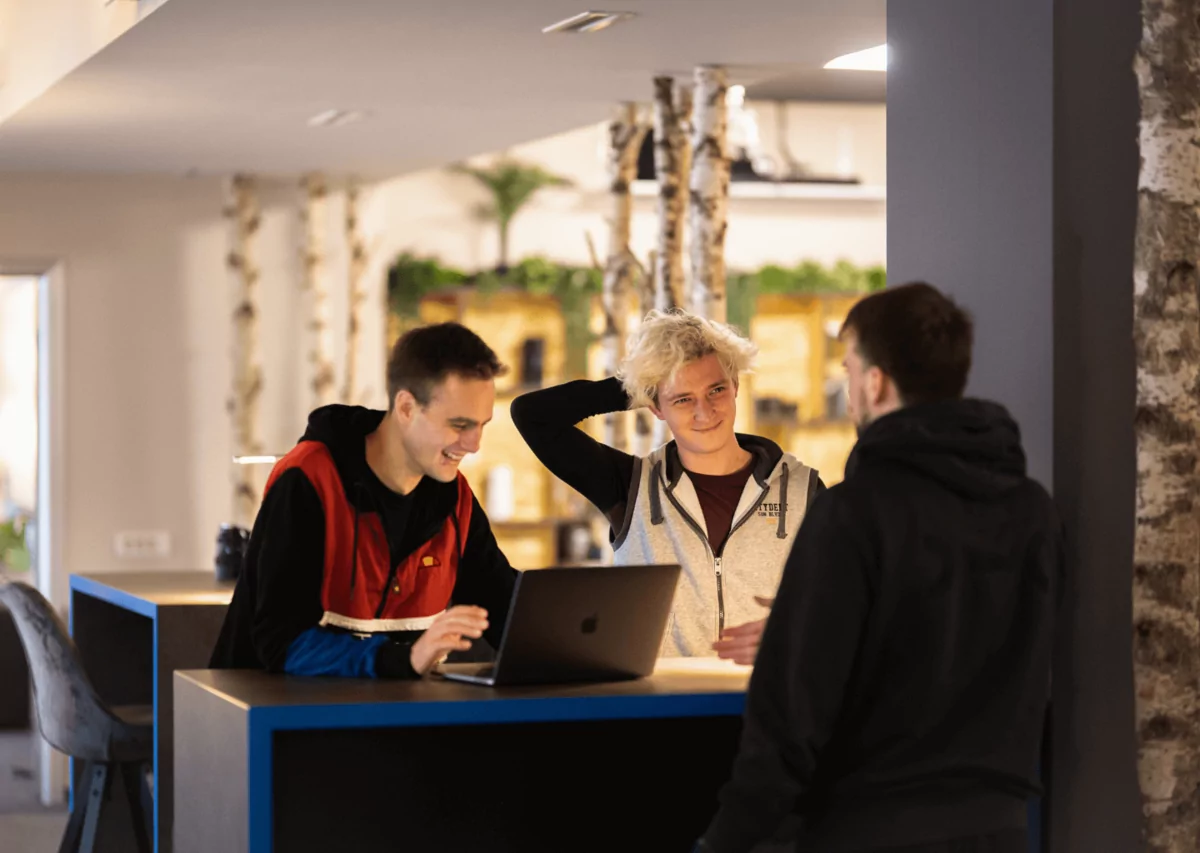AI is revolutionizing the way we work.
Product discovery is no exception.
Getting on the AI train early will allow you to race ahead of the competition.
If you’re a product manager doing discovery, you can use AI tools to increase your productivity without sacrificing quality.
In this article, we’ll discuss 5 ways you can use AI in product discovery.
Let’s dive in!
You can’t have a successful product without knowing your market .
That’s why market research is so important.
AI in product discovery is transforming market research as it enables you to analyze huge amounts of data quickly and accurately.
As Clive Humby, British data scientist, said: “Data is the new oil. It’s valuable, but if unrefined, it cannot really be used.”
Think of AI as a refinery for data.
It can extract information from raw data and turn it into usable knowledge.
You’ll get valuable insights about market trends and consumer behavior for a fraction of the time you’d usually spend.
A Qualtrics report shows that 93% of researchers see AI as an industry opportunity and 80% think it will have a positive impact.
Using AI in market research will help you make data-driven decisions and create products that resonate with your target audience.
source: Search Engine Journal
So, how can you use AI in your market research process?
One way is using AI for sentiment analysis .
AI tools can quickly analyze digital text and determine if the tone is:
Positive
Neutral
Negative
This’ll help you gauge customer sentiment towards your brand and products.
You can use that information to improve brand perception and refine your marketing messages.
Tools like Momentive and Stravito are good options to use for this.
It’s important to note that AI tools can analyze both structured and unstructured data.
Don’t be afraid to use diverse sources of data , such as:
Social media comments
Customer surveys
Online reviews
Questionnaires
Industry reports
Whitepapers
This way, you’ll get a holistic overview of your target market at the click of a button.
Another way you can use AI in market research is by using AI-driven predictive analytics tools.
You can use them to forecast market trends and demand patterns.
You’ll also be able to identify emerging trends and opportunities in your target market.
This will help you create a better product during product discovery.
One other way you can use AI is for competitive analysis .
You can use AI tools to monitor your competitors’ activities such as product launches and changes in their pricing strategies.
This’ll help you quickly react to any changes to stay ahead in the market and improve your product.
The role of AI in market research is only expected to grow in the coming years.
If you adopt AI tools for product discovery early, you’ll gain a significant advantage over those that’ll lag behind.
What’s the goal of product discovery?
Creating a product that meets your users’ needs.
That’s impossible without getting feedback from them.
AI tools can help you quickly analyze a large amount of user feedback and use those insights to better meet your users’ needs.
They’re particularly useful if you’re doing continuous product discovery
Make sure you analyze both positive and negative feedback you receive.
But, you should pay closer attention to negative feedback .
As Bill Gates once said: “Your most unhappy customers are your greatest source of learning.”
It’s vital you do this during product discovery so you can solve problems with your product before launch.
Otherwise, you run the risk of launching a faulty product and delivering a poor user experience (UX).
Think about these statistics – according to research by Dixa , 93% of customers read online reviews before purchasing a product.
Also, 95% will spread the word if they have a negative experience with a product, compared to only 47% if they have a positive experience.
Pictured below are a few other stats that show just how impactful negative experiences with a brand can be.
source: UserPilot
While the percentages might vary slightly, a negative experience with a product has a huge impact on users’ perception.
These stats highlight the importance of addressing negative feedback during product discovery.
So, how can AI help you analyze user feedback?
AI’s natural language processing (NLP) capabilities allow it to analyze vast amounts of unstructured feedback.
It doesn’t just use keyword analysis to identify and summarize your users’ most common comments.
It can also analyze the sentiment and context of your users’ feedback.
AI tools like BetterFeedback do it in seconds, saving you valuable time.
Learn from a software company founder. Make your software product successful with monthly insights from our own Marko Strizic.
You can even use AI tools that process user feedback in real-time.
This’ll help you respond quickly to any issues that happen and speed up your discovery process.
You can also use AI to categorize the feedback you receive into different topics or themes.
By doing this, you’ll be able to spot recurring pain points and prioritize areas that need improvement.
Of course, these tools can’t do everything – yet.
That’s why human review of the results is essential to interpret nuanced feedback accurately.
Still, they significantly speed up the analysis, leaving you more time to focus on more important tasks.
Product design is a key activity during product discovery.
AI tools are a game-changer for designers.
They help them visualize and iterate on ideas more effectively.
Also, they can help them come up with innovative and efficient solutions.
So, what are some benefits of using AI tools in your design process?
One of the main benefits of using AI tools is automating repetitive tasks .
According to a survey by Adobe , 74% of creative professionals say they spend more than half their time on tedious, uncreative tasks.
source: Adobe
AI tools can drastically reduce that time and allow them to use that time for more creative tasks.
So, instead of the designer manually generating screen layouts or optimizing the color scheme, AI-powered design tools can do it for them.
And you can do it near-instantly, all you have to do is input the right parameters.
This allows designers to focus on higher-level creative decisions , which will result in a better product.
You can also experiment with AI generative design tools to quickly explore a wide range of design options.
Some tools you can use are:
The generated designs can be a good starting point that you can refine and customize.
Another good way to use AI tools is pattern recognition .
They can analyze huge design datasets and identify patterns and trends.
This’ll help you create designs that align with current trends and user preferences.
AI tools can streamline your workflow and help you generate ideas quickly.
This’ll result in an optimized and faster product discovery process, allowing you to go to market quicker.
Ideation is another key element of product discovery.
Every product or feature was just an idea first.
AI tools are a great way to stimulate creativity and idea generation during discovery.
They can offer new perspectives and help you come up with innovative solutions to the challenges you face during discovery.
So, what are some ways you can use them for ideation?
Let’s say you’re building a car-buying app and you’re brainstorming about which features your product should include.
You can open an AI chatbot like ChatGPT or Bard and ask it to come up with feature ideas.
A simple prompt that goes straight to the point works best.
You can ask “Which features would you add to a car-buying app?” and it’ll list out the most relevant features.
This is a great starting point for ideation.
Instead of having to come up with potential features on the spot, you’ll have a ready-made list you can immediately start discussing with your team.
Think of AI tools as the ultimate creative assistant that complements human creativity.
They can analyze huge amounts of data and provide you with data-driven suggestions.
This’ll help you come up with ideas and concepts that are actually relevant to your users.
A great thing about AI tools is that, unlike humans, they’re free of biases.
Biases can destroy your product before it even gets off the ground.
With AI tools, you’ll get unbiased and neutral ideas that are generated based on objective criteria.
This’ll help you create a product that better meets your users’ needs.
And that’s what product discovery is all about.
To create a great product, you need to understand your users.
One of the best ways to do that is through user behavior analysis.
AI tools can help you do it at scale .
So, how can you use it during product discovery?
Let’s say you’re doing user testing for your product during discovery.
You can use AI tools to track your users’ behavior and interactions with your product in real-time.
AI tools like Qualetics can then identify patterns in your users’ behavior.
This’ll help you quickly identify their pain points and preferences .
You’ll also be able to spot problem areas that you have to improve in your product.
AI-powered user behavior analysis becomes especially useful if you’re doing continuous product discovery.
source: Maze
You’ll be able to track your users’ interactions with your product across all platforms.
This, along with regular touchpoints with your users, will help you continuously meet their needs.
Your users expect that, too.
A Salesforce survey shows that 73% of customers expect companies to understand their unique needs and expectations.
They’re also open to the use of AI to improve their experience – 69% of customers agree with that statement.
For example, Netflix uses AI to make personalized recommendations based on a user’s preferences.
So, it’s a good idea to add an AI algorithm that can analyze user behavior and personalize their experience with your product.
App development starts with product discovery…
Another way you can use AI for behavior analysis during discovery is by analyzing your user journey maps .
User journey maps are a visualization of your user’s path from the moment they learn about your product to when they become regular users.
In simple terms, they’re a simulation of your users’ behavior when using your product.
AI tools can spot where you can improve them and provide your users with a better experience.
Using AI behavior analysis tools in product discovery will help you create a product that’s tailored to your users’ preferences and needs.
And a product that does that has a much better chance of succeeding.
AI tools are a game-changing innovation that can significantly speed up your product discovery process.
Using them, you’ll spend less time doing repetitive tasks during discovery and you’ll be able to focus on more important tasks.
This’ll result in you creating a product that better meets your users’ needs.
If you want to learn more about product discovery, check out our process and feel free to schedule a call if you need discovery for your product.






